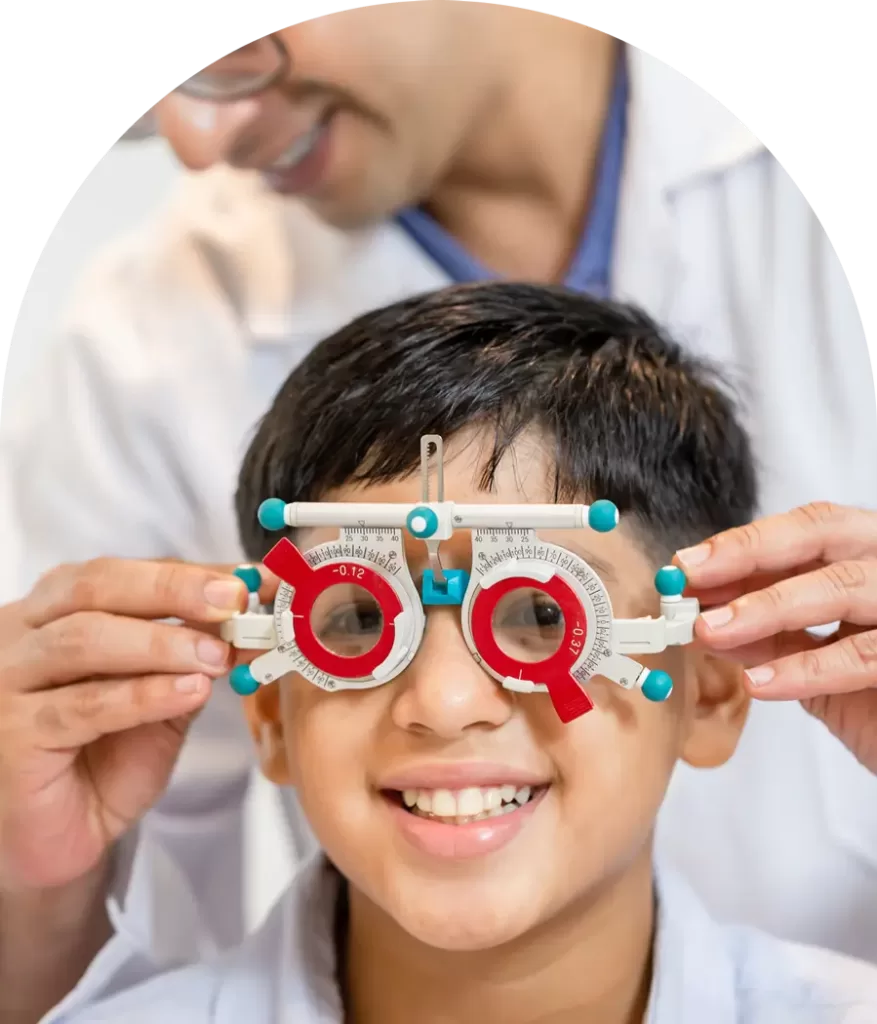
Paediatrics & Squint
Maintaining your child’s overall health requires regular visits to a paediatric ophthalmologist. While immunizations, routine screenings for hearing, weight, and growth charts are typically top of mind for most parents, it’s important not to overlook the significance of your child’s visual health.
Eye conditions in children often do not display clear signs or symptoms, and Children cannot often effectively communicate any issues they may be experiencing with their eyesight, and they might even perceive their blurry vision as normal. This means regular eye tests with a paediatric ophthalmologist specialist are the only way to diagnose potential issues.
In cases with no immediate signs of problems and no significant family history of squint, lazy eye or severe childhood eye conditions, we recommend an annual eye examination from a paediatric ophthalmologist around 3-4 years old. Once these children reach nine and upwards, we generally advise an eye examination every two years unless your children’s eye doctor advises otherwise.
Maintaining your child’s overall health includes regular visits to a paediatric ophthalmologist. While immunizations and routine screenings for hearing, weight, and growth charts are crucial, it’s equally important to prioritize your child’s visual health.
Eye conditions in children often do not show clear signs or symptoms. Children may not effectively communicate any vision issues they experience, and they might perceive blurry vision as normal. Therefore, regular eye tests with a paediatric ophthalmologist are essential for early diagnosis of potential issues.
For children without immediate signs of problems and no significant family history of conditions like squint, lazy eye, or severe childhood eye conditions, we recommend an initial eye examination around 3-4 years old. From age nine and up, an eye examination every two years is generally advised, unless otherwise recommended by the eye doctor. Regular check-ups ensure early detection and appropriate management of any developing visual concerns in children.
Some commonly paediatric conditions
- Squints (Strabismus): This condition involves misalignment of the eyes, where one eye may turn inwards, outwards, upwards, or downwards while the other looks straight ahead. Squints can cause blurred or double vision.
- Paediatric Cataracts: A condition where the clear lens of a child’s eye becomes cloudy. Untreated paediatric cataracts can hinder normal vision development and lead to vision loss.
- Paediatric Glaucoma: Although rare in children, paediatric glaucoma involves increased pressure within the eyes that can damage the optic nerve. Without treatment, it can potentially cause blindness.
- Refractive Errors: Common eye disorders that result in blurry vision due to the shape of the eye preventing light from focusing directly on the retina. Types include near-sightedness (myopia), far-sightedness (hyperopia), and astigmatism (distorted vision).
- Retinopathy of Prematurity (ROP): ROP affects premature babies whose retinas do not fully develop shortly after birth. Abnormal blood vessels can form, which are fragile and prone to leaking, scarring the retina and potentially causing retinal detachment, a leading cause of visual impairment and blindness in ROP.
- Amblyopia (Lazy Eye): Amblyopia occurs when the vision in one or both eyes does not develop properly during childhood. This often happens when one eye is weaker, and the brain Favors the stronger eye, leading to underdevelopment of the visual pathway in the weaker eye.
Regular visits to a paediatric ophthalmologist are essential for early detection and management of these conditions to ensure optimal visual health and development in children.
At Roya Eye Clinic, our paediatric eye specialists provide comprehensive services for diagnosing, managing, and treating all children’s eye conditions. Our team includes specialized paediatric ophthalmologists, optometrists, and orthoptists who are dedicated to preserving and enhancing the vision of our youngest patients.

